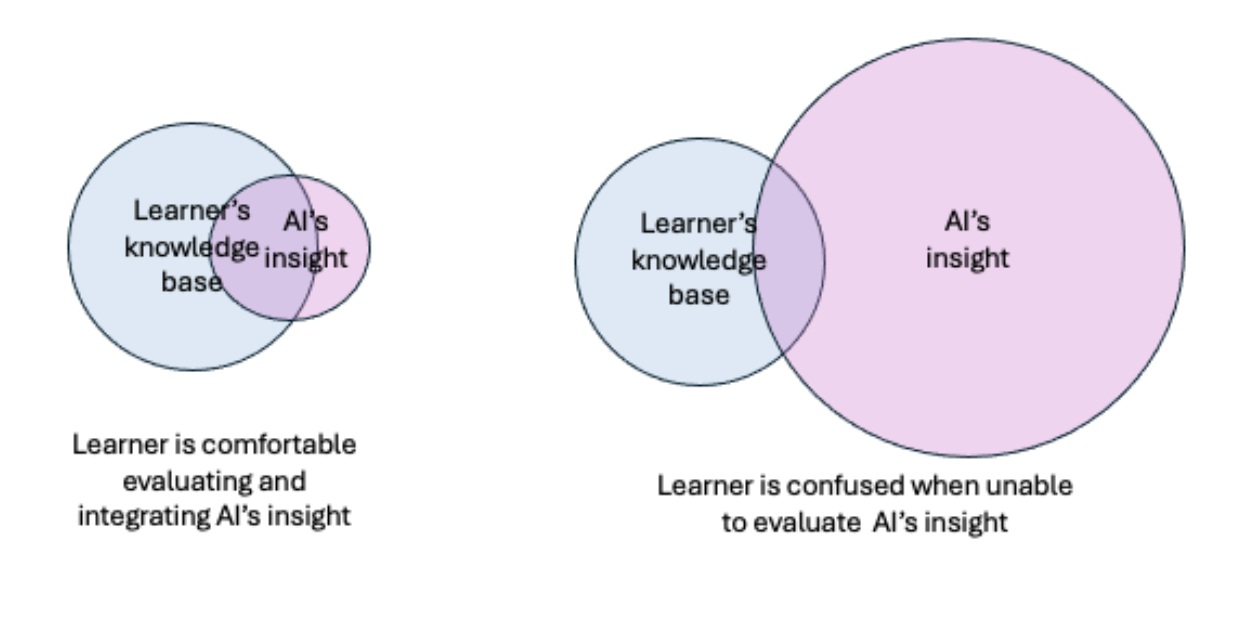Beyond the Code: How AI is Reshaping Problem-Solving Skills in Introductory Computer Science
The emergence of generative AI has taken the CS education community by a storm in the last two years. As an instructor of introductory computer science (CS1) courses, I am keenly interested in leveraging AI to make CS1 better. While concerns about academic dishonesty are real, so is the golden opportunity to transform CS education.
Responding to students’ perception of AI when they enter CS1
In each semester, I ask students what they think about AI. The responses I get are as diverse as the cohort. Some students actively embrace AI. Many students just want to learn more. A few are skeptical. Some students are genuinely afraid that AI will completely replace human labors and make their current study meaningless. Almost everyone seems to agree that AI is here to stay and we need to learn how to live better with this technology. So, students are motivated when they learn that the CS1 class they are taking will teach them how to harness this technology as an essential skill.
How CS1 goals are reshaped by AI
While CS1 is often thought of as a programming course, it more commonly covers a wide range of essential skills, including problem-solving, logical reasoning, and the ethical use of technology. Programming is only the means for developing these essential skills. Therefore, it’s fair to say that AI does not change the goals of CS1, but it does change the way that these goals are achieved. Problem-solving now involves more powerful tools. Critical thinking and logical reasoning now operate on a more accessible knowledge base. Programming skills expand to more advanced domains. So, my goal as a CS instructor is to help students achieve these goals with a new level of competence. Below are a few AI-based classroom activities that I have found successful in engaging my students.
Use AI to strengthen problem-solving and critical thinking
One learning objective of problem solving is to use the right tool for the right task. As AI makes tools more accessible, this learning objective expands to harnessing AI-generated tools and evaluating their effectiveness. I would use the teaching of random number generation as an example on how to meet this objective. In my class, I start with the concepts of random number generation and show my students how to use a basic random number generator. Then, I give the students some hands-on practice to consolidate their programming skills. After my students feel comfortable solving a problem on their own, I ask them to ask AI to solve the same problem using a few different techniques. The students are to test the AI-generated code and evaluate the quality of each technique. This exercise lets the students practice using what they learn in class to navigate the wide array of new information accessible through AI.
Key Lessons
- We need to build a reliable knowledge base so that we can make sense of the new information out there.
- While plenty of techniques are available, it is still our choice to decide what we want to use and how we want to use them.
- We are free to explore, adopt, or reject AI’s assistance as we deem best. Such choices are personal.
Use AI to improve the quality of work
Students mention that they use AI for brainstorming. However, a common pitfall among students is to mistake AI-generated ideas for their own, as revealed in one ethics lesson in my CS1 class. In this activity, I ask students to do a three-part role playing. First, they play the role of an applicant for a teaching position, and prepare a talk to teach teens about phishing. Next, the students play the role of a recruiter and pick an applicant based on the talk outlines. Lastly, the students revert back to the applicant’s role and rewrite their talk outlines.
It turns out that many students use AI to generate the outline for them in the first part of the role play. While the AI-generated outline has a good framework, the generic examples provided by AI are mostly unrelatable to the target audience. Furthermore, the AI-generated posts all look very similar. In the second part of the role play, the students quickly realize that AI-generated outlines fail to capture a recruiter’s attention.
The real brainstorming starts in part three of the role play. To improve on their talk, I ask students to recall what engaged them when they were teens. As students connect phishing to their memories of games, fun activities, and phone chats with friends, their creativity flourishes. Discussing their ideas helps them incorporate their own communication styles into the AI-generated outline. After the revision, many outlines reflect superior quality both in content and structure beyond what can be achieved before the era of generative AI.
Key Insights
- AI can perform a task with a generic solution, but that should only be used as the starting point of our work.
- It is the human element we put into our work that enables us to leverage AI for higher achievements.
- New visions and horizons often do not appear in isolation, but rather through human interactions such as discussions.
Do’s and Don’ts
Integrating AI as a component in class raises the question on how to make such learning effective. A student’s comfort level with AI seems proportional to the student’s ability to evaluate and integrate the AI-generated information. When AI generates information that is limited and relatable to what a student knows, the student tends to develop competence and confidence with AI. In contrast, when AI generates information that is too vast or complex for the student to exercise critical thinking, the student experiences confusion and distrust.

Key Take-Aways
How to incorporate AI when teaching problem-solving:
- Design AI-related problems intentionally to complement and not to replace existing materials. For example, if an essential technique is taught in class, ask AI for an alternative technique. This enables students to use the technique they learn in class as a reliable reference point to evaluate the AI-generated information.
- Two-step engagement with AI:
- First, let students ask AI a question and get results.
- Second, ask students to evaluate the results and build something better on top of the results.
- Address the emotional aspect and encourage students to learn at a comfortable pace. Assure students that non-AI alternatives exist and human expertise will not be replaced by AI.
What to avoid:
- Do not present AI as a faster alternative, because such an attitude fosters a mindset for shortcuts and diminishes incentives for in-depth learning. Instead, think of AI as a tool that would enable people to do things better, and ultimately achieve higher goals.
- Do not present AI skills in a way that is beyond the students’ capabilities. Instead, break such skills into smaller more manageable units that can be explored incrementally.
Conclusion
The emergence of AI does not entail an overhaul of fundamental learning objectives in CS education. Instead, it calls for a transformation in how we achieve these objectives. Such transformation requires educators to use AI to promote the development of critical thinking and problem-solving skills in the classroom. We want to teach students to view AI as a starting point for their own creative and analytical work rather than an endpoint. This mindset helps them thrive in an AI-enhanced world. By cultivating a healthy mindset paired with the appropriate skill sets, CS education can prepare graduates to solve complex problems in the industry. The future of CS as a career path looks promising for such graduates.




